The off-road world thrives on rugged capability and raw power, and for years, side-by-side vehicles have relied on the trusty continuously variable transmission (CVT) to tackle everything from muddy trails to desert dunes. CVTs have become the go-to choice for their seamless power delivery, keeping engines humming at optimal RPMs no matter the terrain. But there’s always been a catch: once a CVT is set at the factory, its gear ratios are locked in, limiting its versatility. Enter Polaris, the Minnesota-based innovator, with a groundbreaking patent that could redefine what a CVT can do. This new technology promises to let drivers change gear ratios on the fly, making side-by-sides more adaptable than ever.
The CVT: A Staple of Side-by-Sides
For those who love hitting the trails, the CVT is a familiar friend. Unlike traditional transmissions with fixed gears, a CVT uses a belt and pulley system to deliver a smooth, continuous range of gear ratios. This setup allows the engine to stay in its sweet spot, maximizing power and efficiency whether you’re crawling over rocks or blasting down a straightaway. It’s no wonder CVTs dominate the side-by-side market, powering everything from workhorse utility models to high-performance beasts like the Polaris RZR, Can-Am Maverick X3, and the recently unveiled 250-horsepower Kawasaki Teryx H2.
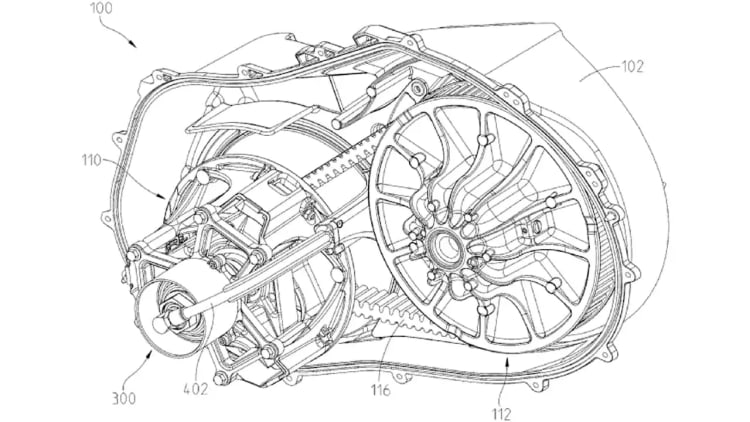
Image credit: Polaris
The beauty of a CVT lies in its simplicity and effectiveness. Mechanical, rubber-belt CVTs, in particular, are cheaper to produce than hydraulic or electronic alternatives, which is why they’re the standard in vehicles from Polaris to mainstream car manufacturers. They’re reliable, easy to maintain, and perfect for the unpredictable demands of off-roading. But for all their strengths, traditional CVTs have a glaring limitation: their gear ratios are fixed from the factory. Whether you’re hauling heavy loads or chasing adrenaline at top speeds, you’re stuck with the same setup, unable to tweak it without serious aftermarket modifications.
Polaris’ Breakthrough: Adjustable Gear Ratios
Polaris, a brand known for pushing boundaries in the off-road world, has tackled this limitation head-on with a new patent that could change the game. According to details uncovered by RideApart, Polaris has developed a CVT that allows drivers to adjust gear ratios during operation. This isn’t just a minor tweak—it’s a complete reimagining of what a CVT can do. The patent, filed by Polaris Industries Inc., describes “apparatuses, systems, and methods for modifying the position of a moveable sheave” in a mechanical CVT. In plain terms, this means Polaris has figured out a way to shift the internal components of the CVT—likely through mechanical, electrical, or pneumatic means—to change how the transmission behaves on the go.
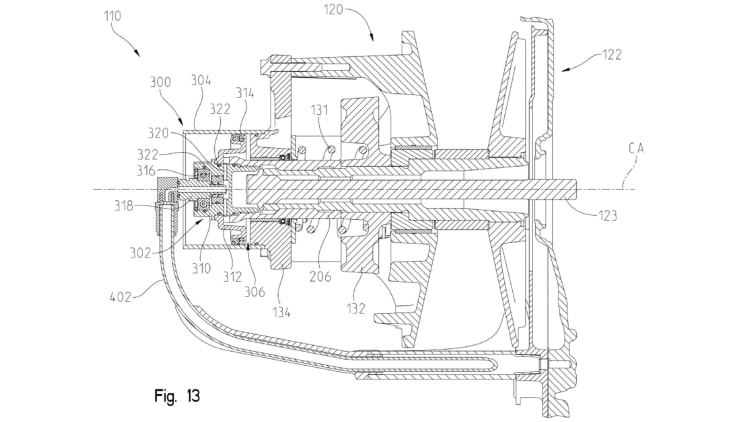
Image credit: Polaris
Imagine this: you’re navigating a steep, rocky trail in your Polaris RZR, and you need maximum torque for low-speed crawling. With a press of a button, you could adjust the CVT to a lower gear ratio, giving you the grunt to conquer the terrain. Later, you hit an open stretch and want to unleash the full power of your machine. Another button press shifts the CVT to a higher gear ratio, optimized for speed. This kind of flexibility could make a single side-by-side equally adept at slow, technical off-roading and high-speed thrills, without the need for costly upgrades or compromises.
Why This Matters for Off-Road Enthusiasts
The ability to change gear ratios on the fly could transform how side-by-sides are used. Traditionally, manufacturers tune CVTs for a specific purpose—utility models like the Polaris Ranger are geared for low-end torque to handle towing and hauling, while sport models like the RZR prioritize higher speeds for trail-ripping performance. But these are compromises. A utility-focused CVT might struggle to keep up on fast trails, while a sport-tuned CVT could bog down when hauling heavy loads. Polaris’ new technology aims to eliminate that trade-off, giving drivers a transmission that adapts to the task at hand.
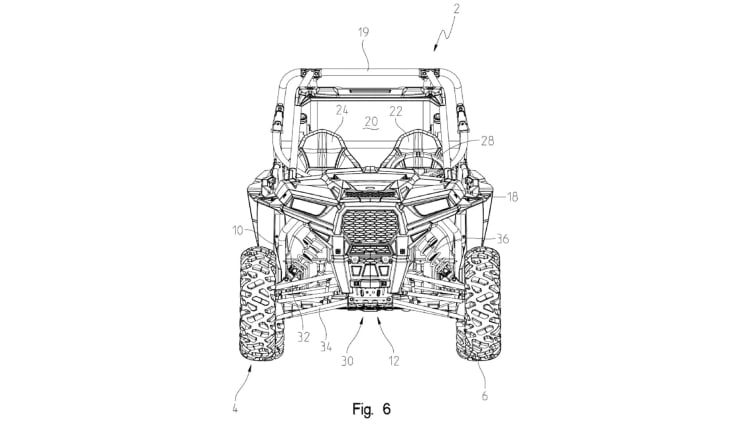
Image credit: Polaris
This innovation could also extend the lifespan of CVT components. Fixed gear ratios often force belts and pulleys to work harder in situations they weren’t optimized for, leading to wear and tear. By allowing real-time adjustments, Polaris’ system could reduce stress on the transmission, potentially lowering maintenance costs and downtime. For off-roaders who put their machines through hell—whether it’s slogging through mud or flying over jumps—this could mean more time on the trail and less time in the garage.
The Polaris RZR Connection
While the patent doesn’t explicitly say this technology will debut on the Polaris RZR, the patent drawings are based on this iconic model. The RZR, a favorite among thrill-seekers for its agility and power, is a natural fit for such a versatile transmission. Its reputation as a do-it-all side-by-side—equally at home on rocky trails, sandy dunes, or open fields—makes it the perfect candidate to showcase this innovation. That said, Polaris often uses the RZR as a testing ground for new ideas, so there’s no guarantee it’ll be the first to get this tech. Still, the prospect of an RZR with adjustable gear ratios is enough to get any off-roader’s heart racing.
How It Works (Without Getting Too Technical)
The details of Polaris’ patent are a bit like a puzzle for engineers, but here’s the gist. A traditional CVT uses a drive clutch, a driven clutch, and a rubber belt to transfer power from the engine to the wheels. The distance between the clutch’s sheaves (the conical halves of the pulley system) determines the gear ratio. In a standard CVT, this distance is fixed once the system is built. Polaris’ innovation introduces a way to move one of these sheaves during operation, effectively changing the gear ratio without stopping the vehicle.
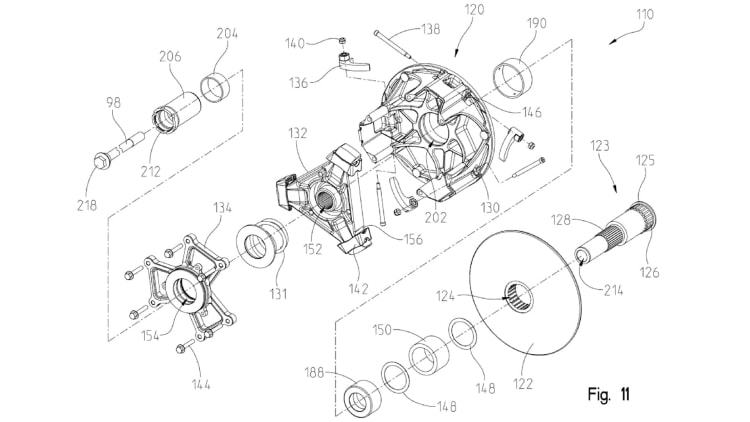
Image credit: Polaris
The patent suggests this could be done mechanically, electrically, or pneumatically—think of it as a system that responds to a driver’s input, like a button or switch, to tweak the transmission on the fly. The exact mechanism isn’t clear (and probably involves some serious engineering wizardry), but the result is a CVT that’s no longer locked into a single setup. This could mean smoother transitions between low-speed crawling and high-speed runs, with the engine always operating at peak efficiency.
The Bigger Picture: A New Standard for Side-by-Sides?
Polaris isn’t new to shaking up the off-road world. The company popularized CVTs in side-by-sides back in 1985 with its first ATV, and its Polaris Variable Transmission (PVT) system has been a benchmark ever since. This latest patent builds on that legacy, taking a proven technology and making it even better. While other manufacturers, like Can-Am and Kawasaki, have started experimenting with dual-clutch transmissions for faster shifts in high-performance models, Polaris’ adjustable CVT could offer a simpler, more cost-effective solution that doesn’t sacrifice versatility.
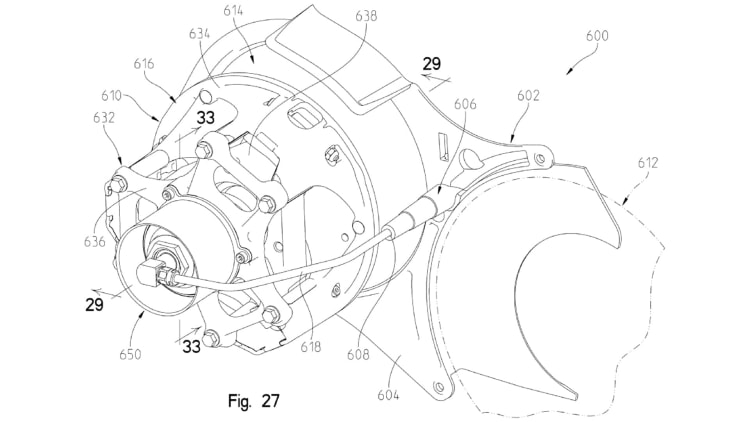
Image credit: Polaris
The implications go beyond just Polaris. If this technology proves successful, it could set a new standard for side-by-side transmissions, pushing competitors to develop their own versions. For consumers, that means more options for vehicles that can handle a wider range of tasks without compromise. Whether you’re using your side-by-side for work, play, or a bit of both, a CVT that adapts to your needs could make every ride more enjoyable.
What’s Next?
As exciting as this patent is, it’s still just that—a patent. There’s no guarantee when, or if, it’ll hit the market. Polaris is known for its rigorous testing, often spending years refining new technologies before they reach consumers. The SteelDrive CVT, introduced in the 2023 Ranger XD 1500, took seven years to develop, and it brought a steel-belt design to side-by-sides for unmatched durability. This new adjustable CVT could follow a similar path, potentially debuting in a future RZR or Ranger model after extensive real-world testing.
For now, off-road enthusiasts can only speculate about how this technology will perform in the wild. Will it be as game-changing as it sounds? Could it make the Polaris RZR the ultimate all-terrain machine? Only time will tell, but one thing’s certain: Polaris is once again proving why it’s a leader in the off-road world, pushing the limits of what’s possible with a side-by-side.
Final Thoughts
Polaris’ latest CVT patent is a bold step toward making side-by-sides more versatile and capable than ever. By allowing drivers to change gear ratios on the fly, this technology could bridge the gap between utility and performance, giving off-roaders a machine that’s ready for anything. Whether you’re hauling gear, tackling tough trails, or chasing speed, a CVT that adapts to your needs could be the key to unlocking the full potential of your side-by-side. Keep an eye on Polaris—this is one innovation worth watching.





